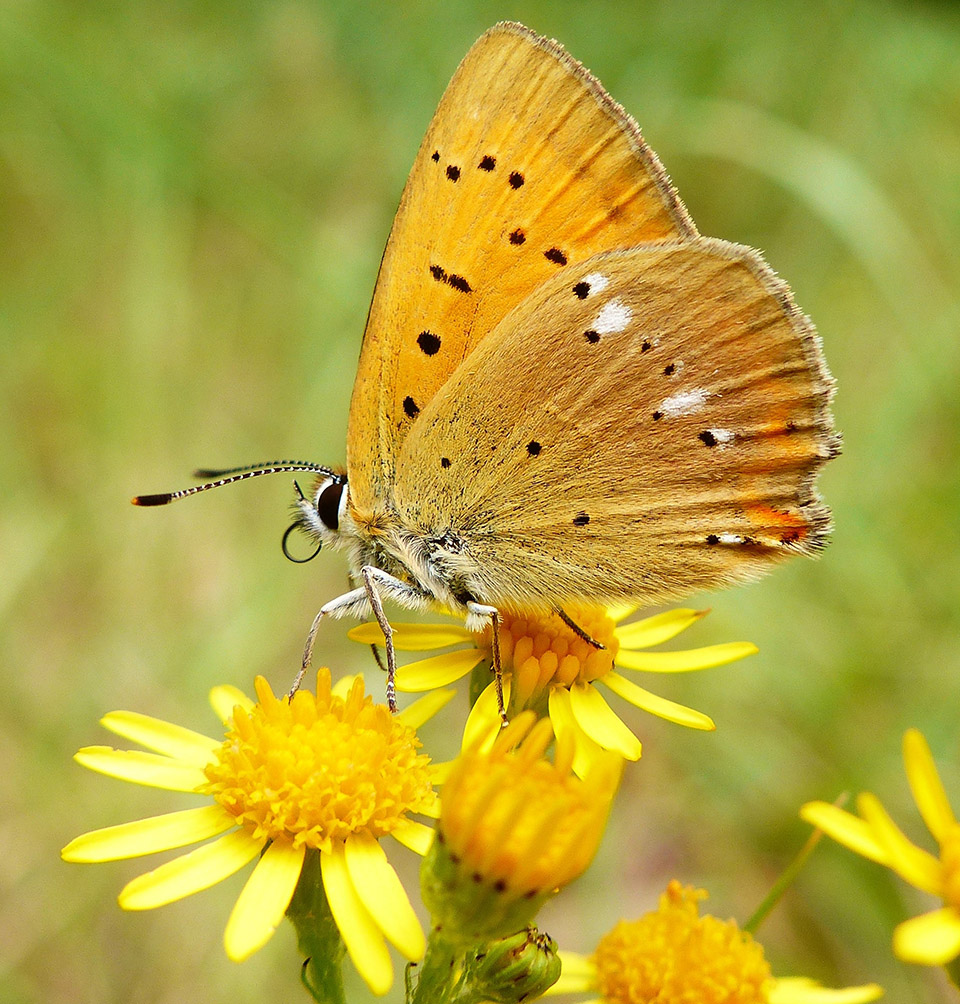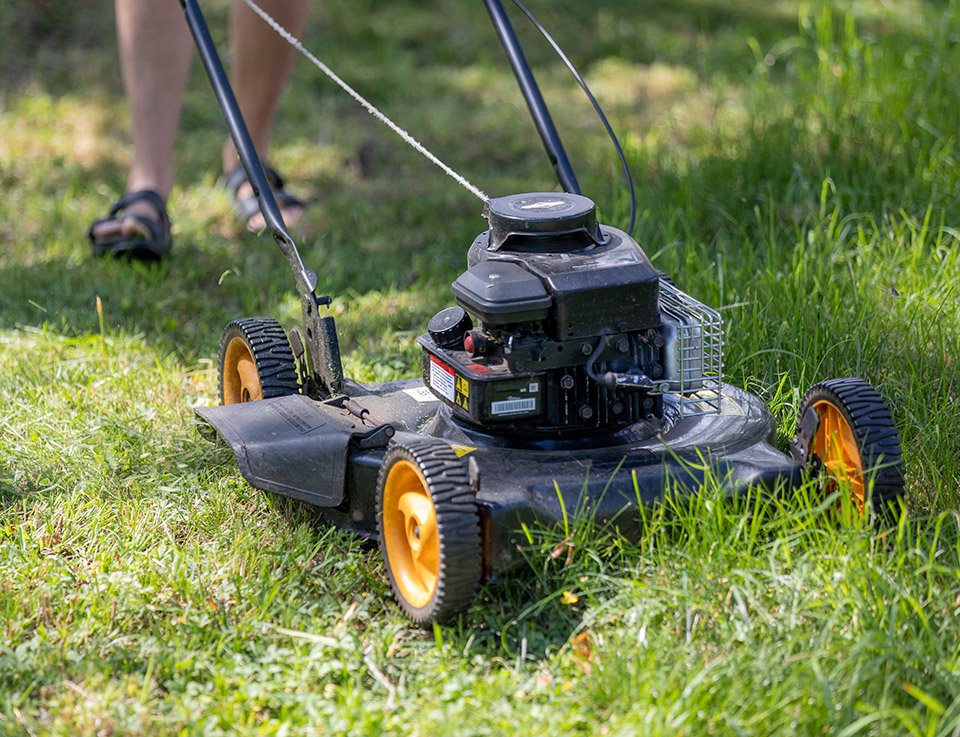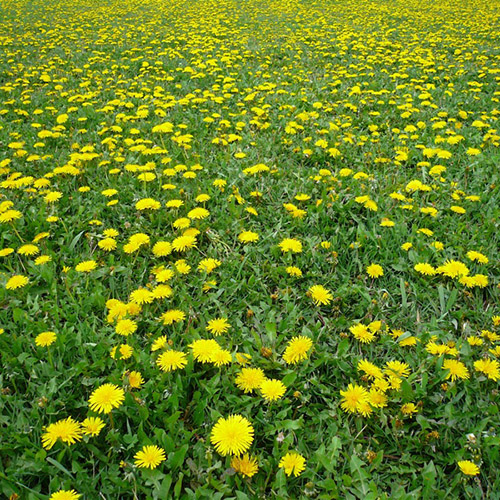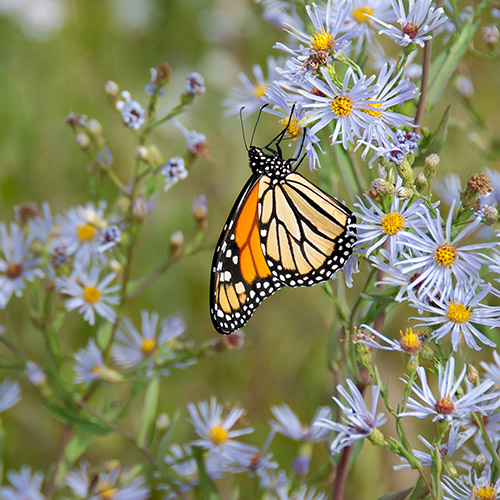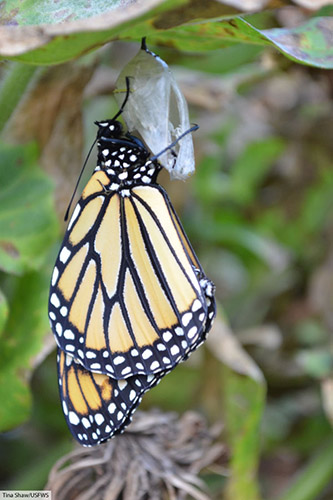Driving down most suburban neighborhoods, the most recognizable sight to see is the shortly mowed lawns of manicured grass that make up most front and backyards. This endless ocean of vibrant green, tightly packed and perfectly trimmed grass is sort after by many homeowners, with the appeal of it representing a healthy and tidy property. Countless dollars and time is thrown into maintaining this vision, with various pesticides, herbicides, weed mats and high-end equipment designed to keep the unrelenting will to interfere from nature at bay. A movement combating this that has been gaining increasing attraction in the recent years is the ‘anti-lawn movement’ or ‘rewilding movement’, which encourages people to redesign their yards and stop fighting against nature and instead reconnect with it.

||It’s All Connected||
~~~~~~~~~~~~~~~~~~~~~~~~~~~~
In our ever-changing world, our lives only seem to get busier and busier. Time is valued and many do not have the time to be taking care of a garden or see the benefits of spending time engaging with nature. Engaging and making the time to be surrounded within the natural world can bring about many benefits to our mental health though. A lawn that is left for nature to take over and reform can provide us with not only more time, but also experiences we may be missing in our lives.
Take the dandelions that have grown and risen above the short blades of grass of a backyard on a warm summer morning the day after a forgotten mow. To sit and watch, we would see bees descend upon these flowers, bodies waggling in the air atop the petals to summon others of the bountiful food source they have found. We would see them drift from dandelion to dandelion with small buzzes, collecting pollen upon their fuzzy legs and nectar to bring back to their hive. From this simple act of allowing these weeds to bloom, we have connected our yard to the surrounding ecosystem and created a sense of belonging within ourselves of being a part of the world around us. Without the action of leaving the weeds, the bees would not have come.
In the same sense, a lawn of grass left to be wild and replaced or mixed with other ground covers such as clover, can uproot our need for perfection and order. We strive earnestly to ensure our grass lawns are the right height and the right density and free of weeds, that the shrubs and flowers lining the sides are tamed and kept in their place. This constant need for control and perfection, and also when we lack it, can take a tole on our mental health. Wild lawns are the epitome of imperfection and order and can be easier to maintain then a manicured grass lawn. Wild lawns are self-maintaining with only the smallest of interventions needed every couple of months. Take a few different patches of flowers planted neatly nearby. These flowers may maintain this orderly fashion for a while, but they eventually choose their own places to seed and sprout up, mixing and mingling together and not bothering with any sort of pattern or tidiness. Or clovers that have sprouted amongst the grass. If left, these will take over the existing grass, creating a new lawn that will not only be as soft or as dense covering as grass, but will also provide bee’s and other beneficial insects with food and will need less mowing or maintenance then grass.
||Judging a weed by its appearance||
~~~~~~~~~~~~~~~~~~~~~~~~~~~~~~~~~~~~~~~~~~~~~~
The bane of all lawn enthusiasts, weeds are considered notorious pests that crop up in grassy back and front yards, ruining the aesthetics of a perfectly unblemished lawn. Many pesticides and herbicides are used on these grassy patches to kill these invaders, but not all weeds are bad, and many provide hidden benefits and can even become a nicer alternative to simple grass lawns.
Dandelion
Described as very opportunistic and quick to infest any bare patches of lawn eventually killing it, these weeds actually fertilize your lawn by pulling nutrients such as calcium from deep within the soil, making them available for other plants to make use of to help them grow, while their wide-spreading roots loosen hard-packed soil, aerating it and reduce erosion. They are also one of the first flowers to bloom in early spring, becoming a main source of nectar and pollen for bee’s emerging from their hives after winter.
White, Red and Strawberry Clover
Considered a nuisance in lawns as it takes all the water and nutrients from the soil needed for grass to grow, suffocating it. More often it is removed due to it’s unsightly appearance in an all grass lawn. When left to thrive and take over, clover draws nitrogen from the air and stores it in it’s roots, releasing it back into the soil as the roots dies and it regrows, fixing nitrogen imbalances in the soil, allowing surrounding plants to absorb for photosynthesis. As well as producing a variety of colored flowers with nectar and pollen for bee’s in winter and summer, clovers are also cold tolerant, creating their own nutrients without needing to rely upon external climate conditions or human intervention to grow and thrive. If seeded or left to take over grass lawns, this will become a great alternative for high-traffic areas with the benefits of requiring no fertilizers to keep healthy and green all year round.

||Is There Anything Better then the Smell of Cut Grass…?||
~~~~~~~~~~~~~~~~~~~~~~~~~~~~~~~~~~~~~~~~~~~~~~~~~~~~~~~~~~~~~
Tapestry lawns are a series of low-lying interlaced and intertwined grass alternative plants that are growing in popularity as alternatives to traditional grass lawns for low-traffic areas. Unlike traditional grass lawns, these tapestry lawns require little maintenance, little water and little mowing, providing amazing benefits to the environment and surrounding ecosystems. Everyone loves the smell of freshly mowed lawn, right? Well, not everyone is so enthralled and great alternatives that are more likely to encourage mowing or trimming then dissuade it, is the alluring smell of the plants that make up the tapestry effect of these wild lawns.
Chamomile lawns
An aromatic and low maintenance ground cover that produces lovely white flowers for bee’s to enjoy nectar from and a natural deterrent that draws snails from veggies gardens and plant beds growing nearby. Requiring mowing or trimming only yearly, this ground cover will grow to only 15cm high and will thrive in shady areas and within the summer heat.
Thyme Lawn
Growing about 8cm high from the ground depending on the variety, creeping thyme is a low maintenance ground cover that smells beautiful, producing white, pink or purple flowers, which will attract bee’s when left to bloom. Requiring little mowing or fertilizer to keep it thriving, thyme is drought and cold tolerant and perfect for light walking areas where they can frame stepping stones.
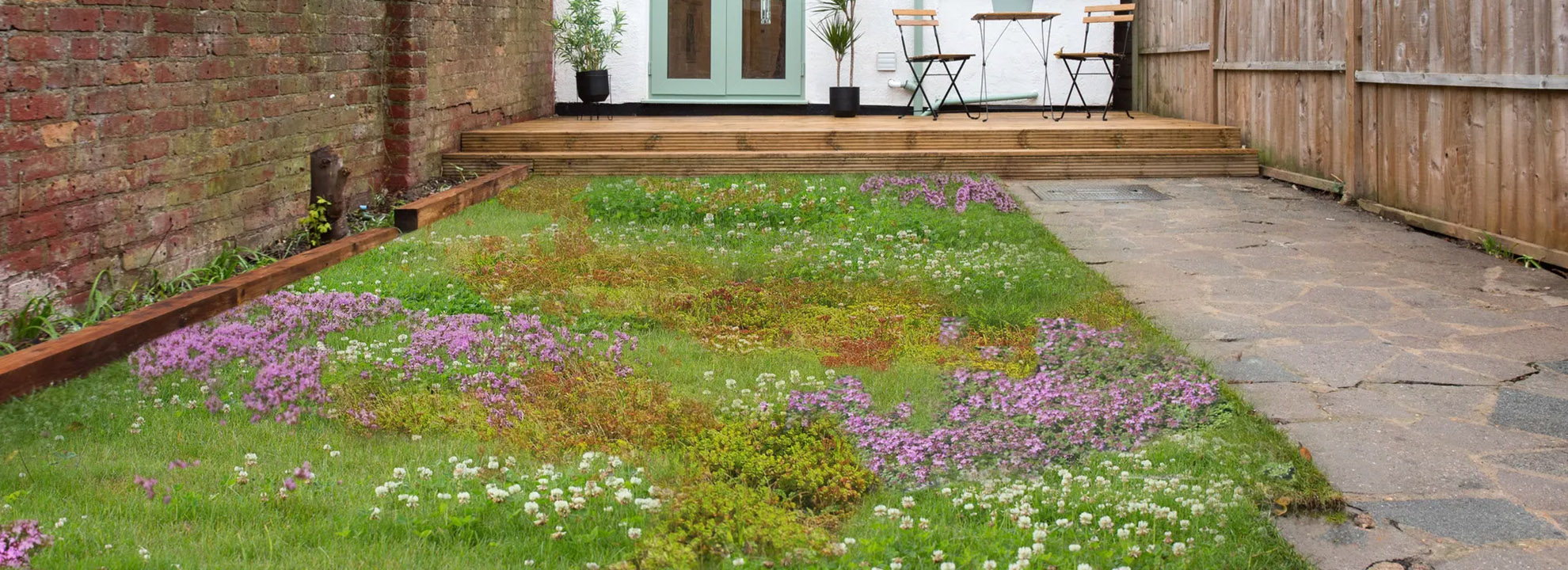
||About the Bugs||
~~~~~~~~~~~~~~~~~~~~~
There are many things that the natural world can teach us when we have the space to be able to engage with physically and see with our own eyes. By replacing lawns – which are deserts for ecosystems and beneficial insects and critters – introducing wildflowers, retaining patches of long grasses and adding food-source plants, can provide a hands-on learning experience that we can witness and engage with. This is something that can easily be done within a backyard, garden space or front lawn.
Many creatures make a home within a wild lawn. These yards can come in many different sizes and shapes and present different challenges and opportunities for these critters that can teach us valuable life lessons.
Spiders
Although many spiders are dangerous and should be treated with respect by not disturbing them, they can teach us about perseverance and ingenuity. Beyond human intervention, the place a spider choses to make its home and erect a web is often bombarded by the weather and other creatures or insects. A spider may rebuild its web daily or even hourly depending on the type of damage the webbing takes, but resiliently the spider will always rebuild.
This perseverance in the face of advisory can teach us to keep going and keep trying even when the things we face are challenging. The spider will also often use the damaged webbing in the rebuilding of the web, connecting the broken parts with the new parts. This ingenuity to find a purpose of something broken that others would consider useless can encourage us to use our imagination, that even things that seem useless or irreparable, can still have a purpose.
Ants
Considered one of the smartest insects, ants can teach us about the effectiveness of problem solving and what determination can achieve. If a single ant comes across a food source in the yard, it will transport it back to its colony. For this to be affective, the piece of food must be small enough for the ant to carry itself, but if the piece is too heavy to lift on its own, the ant will ask for help. The ant will go back to the colony and other ants will come and help them and together, the ants will carry the food. Ants can teach us that some problems can be solved by themselves, while others may require help, encouraging us to ask for help when we need it and that we don’t need to struggle alone when something is too hard.
In retrospect, a single ant may have found a food source small enough to carry, but their path is blocked. No matter what lays in an ant’s path, their determination to get to a food source will always lead to them trying everything and anything to achieve this, rarely giving up. An ants determination and insistence to achieve their goal can teach us that not everything is straightforward and easy, it is often hard, but if we show determination we can often find a way to accomplish what we are wanting, despite the obstacles in our path.
Bees
Similar to spiders, bees should be treated with respect and not bothered or disturbed as they go about there day otherwise they may sting when threatened, but when observing them, bees can teach us about communication and the effectiveness of working in a team. Within a honeybee hive, jobs and roles are divided up amongst the bees and each bee’s role is important to ensuring the survival of the hive. Within the worker bee role, tasks such as caring for the eggs, guarding the queen and hive, gathering nectar and producing honey are split between the bees. All these tasks are of equal importance and each bee needs to follow their role for the hive to run smoothly. Within a group setting, we can learn teamwork and communication off the bee that, although different tasks may be given to every person, these individual tasks will lead to the overall accomplishment of whatever is being done. That we can achieve things by working together, even when it seems that we are working apart, and that communication is key to ensuring things are done effectively.
Caterpillars and Butterflies
Aside from teaching us about the lifecycle of birth and death, caterpillars and their future forms of butterflies, can show us that while change is hard and frightening and sometimes sad, it can be beautiful. Unlike the tadpole which slowly transforms into a frog as it grows, caterpillars go through a tough struggle to become a butterfly. When a caterpillar changes, they lose the part of them that makes them a caterpillar, a part that they will never have again. For someone experiencing a change, we can feel as though a similar thing is happening to us, that we have lost or will lose something we have known or had known, forever or it won’t be the same. For the caterpillar, this change they go through, although difficult, is one they eventually overcome and turn into a butterfly at the end of it. For us, this can show us that although change can be difficult, it does eventually resolve itself and sometimes it can culminate in something beautiful.
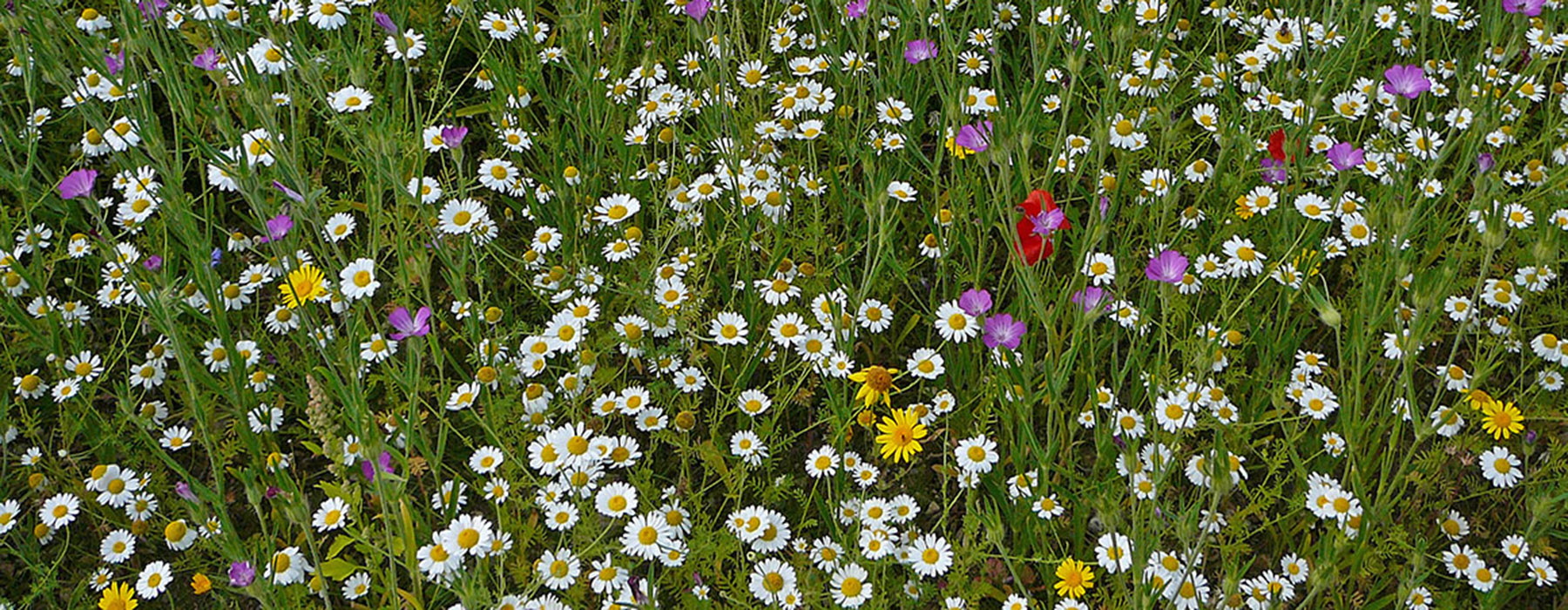
So why not give a wild lawn a go? Lets keep the weeds and watch them grow, nature might just surprise you.

